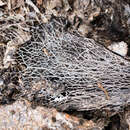en
names in breadcrumbs


The name Opuntia dillei Griffiths has been used for a spineless or nearly spineless morphotype of O. engelmannii.
Opuntia engelmannii
Common Name: cactus apple
Location: Sonoran and Chihuahuan Deserts
Elevation:1,500-6,200 feet
Description: Identified by it's broad, flat, green pads and white spines that are 3” long. The spines can either be curved or straight.These cactus thorns are modified leaves and the shape conserves the water and adds protection.. Glochids are also found on a prickly pear and are tiny barbed hairs found through out the pads. Can grow up to 5 feet tall and 10-15 feet wide. RIpe fruit can be found on the prickly pear in the beginning of July. This red fruit is also called “Tuna” and are edible. Prickly pears grow in washes, hillsides and in areas where the soil is sandy and dry. This plant needs full sun and are native to Sonoran Desert.
Opuntia engelmannii is a prickly pear common across the south-central and Southwestern United States and northern Mexico. It goes by a variety of common names, including desert prickly pear, discus prickly pear, Engelmann's prickly pear[2] in the US, and nopal, abrojo, joconostle, and vela de coyote in Mexico.
The nomenclatural history of this species is somewhat complicated due to the varieties, as well as its habit of hybridizing with Opuntia phaeacantha. It differs from Opuntia phaeacantha by being green year round instead of turning reddish purple during winter or dry seasons, as well as having yellow flowers with red centers.[3]
Opuntia engelmannii var. flexospina is most likely a spiny form of Opuntia aciculata.[9][10]
The Opuntia engelmannii range extends from California to Louisiana in the United States, and from Sonora (state) and Chihuahua (state), to the Tamaulipan matorral in north and central Tamaulipas.[2]
In the Sonoran Desert, terminal pads face predominantly east-west, so as to maximize the absorption of solar radiation during summer rains. Although found occasionally in the Mojave Desert, it tends to be replaced by Opuntia basilaris, which does not need the summer rain.
Naturalised in southern and eastern Africa, including Loisaba in Kenya.[11]
The overall form of Opuntia engelmannii is generally shrubby, with dense clumps up to 3.5 metres (11 ft) high, usually with no apparent trunk. The pads are green (rarely blue-green), obovate to round, about 15–30 cm long and 12–20 cm wide.[12]
The glochids are yellow initially, then brown with age. Spines are extremely variable, with anywhere from 1-8 per areole, and often absent from lower areoles; they are yellow to white, slightly flattened, and 1–6 cm long.
The flowers are yellow, occasionally reddish, 5–8 cm in diameter and about as long. Flowering is in April and May, with each bloom lasting only one day, opening at about 8AM and closing 8 hours later. Pollinators include solitary bees, such as the Antophoridae, and sap beetles.
The purple fleshy fruits are 3–7 cm long.
The fruits were a reliable summer food for Native American tribes.[13] The Tohono O'odham of the Sonoran Desert, in particular, classified the fruits by color, time of ripening, and how well they kept in storage.
Opuntia engelmannii is cultivated as an ornamental plant, for use in drought tolerant gardens, container plantings, and natural landscaping projects.[14]
Opuntia engelmannii is a prickly pear common across the south-central and Southwestern United States and northern Mexico. It goes by a variety of common names, including desert prickly pear, discus prickly pear, Engelmann's prickly pear in the US, and nopal, abrojo, joconostle, and vela de coyote in Mexico.
The nomenclatural history of this species is somewhat complicated due to the varieties, as well as its habit of hybridizing with Opuntia phaeacantha. It differs from Opuntia phaeacantha by being green year round instead of turning reddish purple during winter or dry seasons, as well as having yellow flowers with red centers.